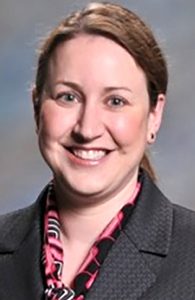
By Susan E. Campbell
Small business owners have the flexibility to choose whichever type of retirement plan they desire to accumulate a future nest egg on a tax-deferred basis. But that doesn’t mean the decision is easy, or that the company may need to change to a different plan in years ahead.
“Each of the four basic types of defined contribution plans has advantages and drawbacks,” said Laurie A. Stillwell, CPA, in Saratoga Springs.
“My job is to talk through what the business owners’ goals are and direct them to the plan that checks those boxes,” she said.
“Companies are not stuck in a plan once they have it,” said Richard J. Fuller, CPA in Glens Falls. “But if there is to be a switch, it has to be done right.”
“There is no one-size-fits-all with retirement plans,” said Stillwell. “A plan may work well for the first five years, but in year 10 or 15, it may no longer fit.”
Small business advisors like Stillwell and Fuller keep a constant eye on the qualified retirement savings process before, during and after the client company’s initial set-up.
“The first thing I want to know is, how much money does my client have available to put away for their future,” said Fuller. “And the next question is, how much do they want to put aside for employees.”

The cost of the plan includes not only the total dollar amount of employer-made contributions to the plan, but also the timing of those payments, according to Fuller.
“The timing of when contributions have to be made impacts cash flow,” he said. “Plus, there is a cost in terms of both time and money to administer any retirement plan.”
“Contributions can be tricky,” said Stillwell. “Do you want discretion every year? What if the plan requires you to make a contribution?”
Questions like these “are all part of crafting the conversation,” she said.
Stillwell said many small businesses are becoming “more aggressive about saving” and want to “sock away more money for themselves. For that goal, they might choose to establish a 401(k) profit sharing plan.”
A 401(k) plan allows for the highest maximum contribution levels when employee salary deferrals and employer contributions are combined, said the experts.
“They’re the most complicated, and complex options mean higher administrative costs,” said Fuller. “But the more money you can put away, the easier it is to justify the higher expenses.”
“There is an annual Form 5500 filing with IRS that could cost hundreds or even thousands of dollar to prepare,” he said. “Testing procedures ensure that the plan cannot unjustly favor business owners and other highly compensated employees.”
There is also a solo 401(k) for self-employed individuals, where administrative costs are lower than the typical 401(k) plan.
“This plan is used by sole proprietors or business owners who won’t be hiring employees,” Fuller said. “Establishing a SEP IRA, or Simplified Employee Pension Plan, is different. It is totally for employer contributions, which, like employer contributions to any plan, are tax deductible as a business expense.”
There is no eligibility testing, 5500 filing, plan set-up charge or annual maintenance fee for SEP Plans, Fuller said. Plus, business owners can decide how much to contribute on behalf of employees each year, up to the maximum allowed by law. That means they aren’t locked into making a contribution if profits are down in a bad year.
Fuller said if the employer is limited to a $5,500 contribution per employee, “there is no need to get complicated. Just do a traditional IRA.”
But if there is more cash available and fewer than 100 employees, the SIMPLE IRA is a good choice, according to the experts.
The Savings Incentive Match for Employees IRA, as the name suggests, is a type of employer-provided IRA where employees are motivated to participate because the company also contributes. But the top percentage employers may contribute is only 3 percent, compared to 25 percent for a 401(k) plan.
Fuller said that if a company offers a SIMPLE IRA, participants cannot have any other profit sharing or SEP Plan at the same time.
“Business owners have to evaluate what they have and decide, is this the best plan going forward or is it time for a change?” he said. “If you are not sure, however, you shouldn’t be changing your plan year to year. You need to make a clean break that minimizes administrative requirements and expenses.”
There can be changes within plans and between plans, said the advisors, that impact such decisions. Congress has been generous in making new and different retirement plan options available to a growing number of market segments. Plus, new legislation ups the amount of annual contributions from time to time to help keep pace with inflation.
Stillwell said to help defray the cost to set up a plan, small businesses have gotten a three-year, $500 tax credit for establishing a new plan. That credit has been increased.
“The company must have fewer than 100 employees and at least one non-highly-compensated individual participating in the plan,” she said. “The credit is for automatic enrollment plans that are new or converted from other plans.”
Indeed, the U.S. government would like to see more people taking advantage of a retirement savings plan in any form. One-third of Americans surveyed by Bankrate.com said they had never had a retirement account.
“The increased credit is part of the SECURE Act passed in December 2019, and we will see some rank-and-file employee participation,” said Stillwell.
“Congress loves their acronyms,” she said. The ‘Setting Every Community Up For Retirement Enhancement’ Act has a number of provisions that Stillwell said will benefit individuals, including certain long-term, part-time employees, more so than employers.
But while Congress gives, it also takes away.
“The legislative biggie now has to do with inherited IRAs,” said Fuller. “Until now, beneficiaries of inherited IRAs could elect to take distributions based on their own life expectancy. That has been changed to within 10 years, unless the beneficiary is the deceased’s spouse.”
That puts tax dollars into federal coffers faster, he said.
